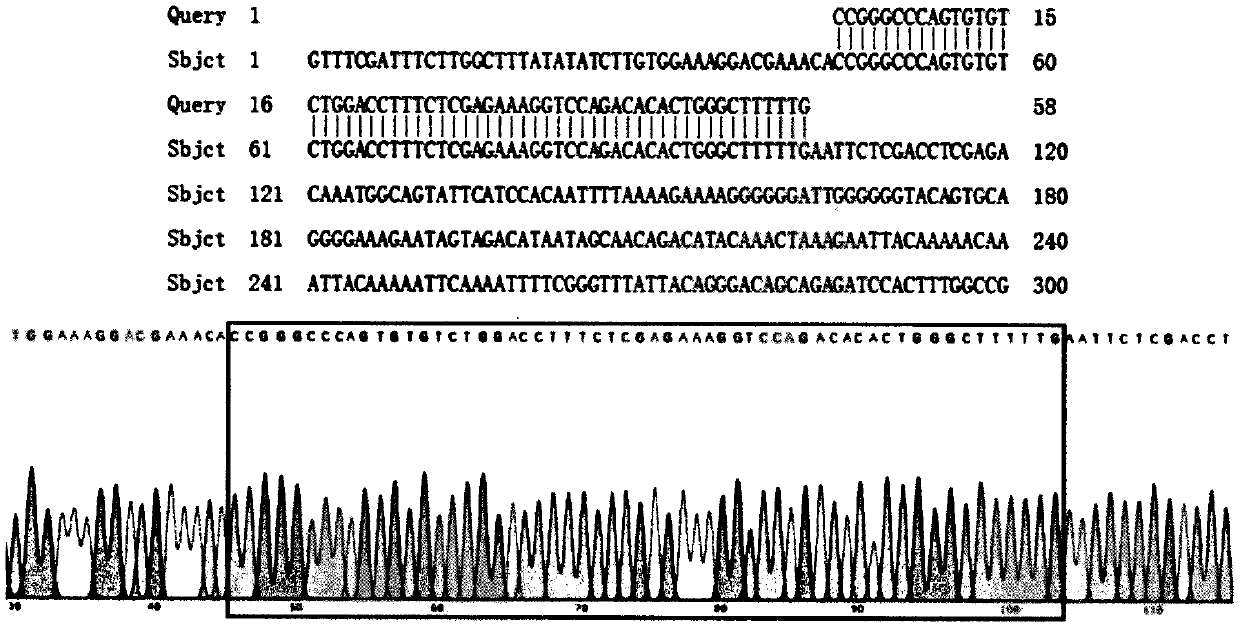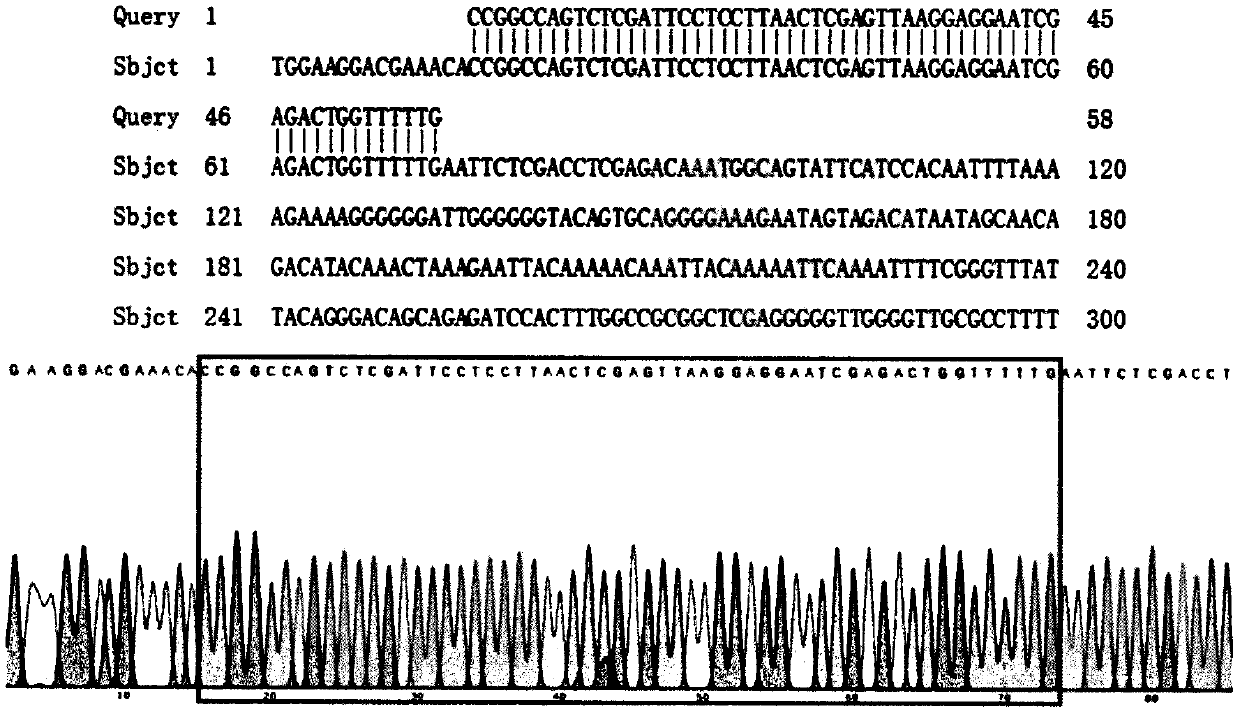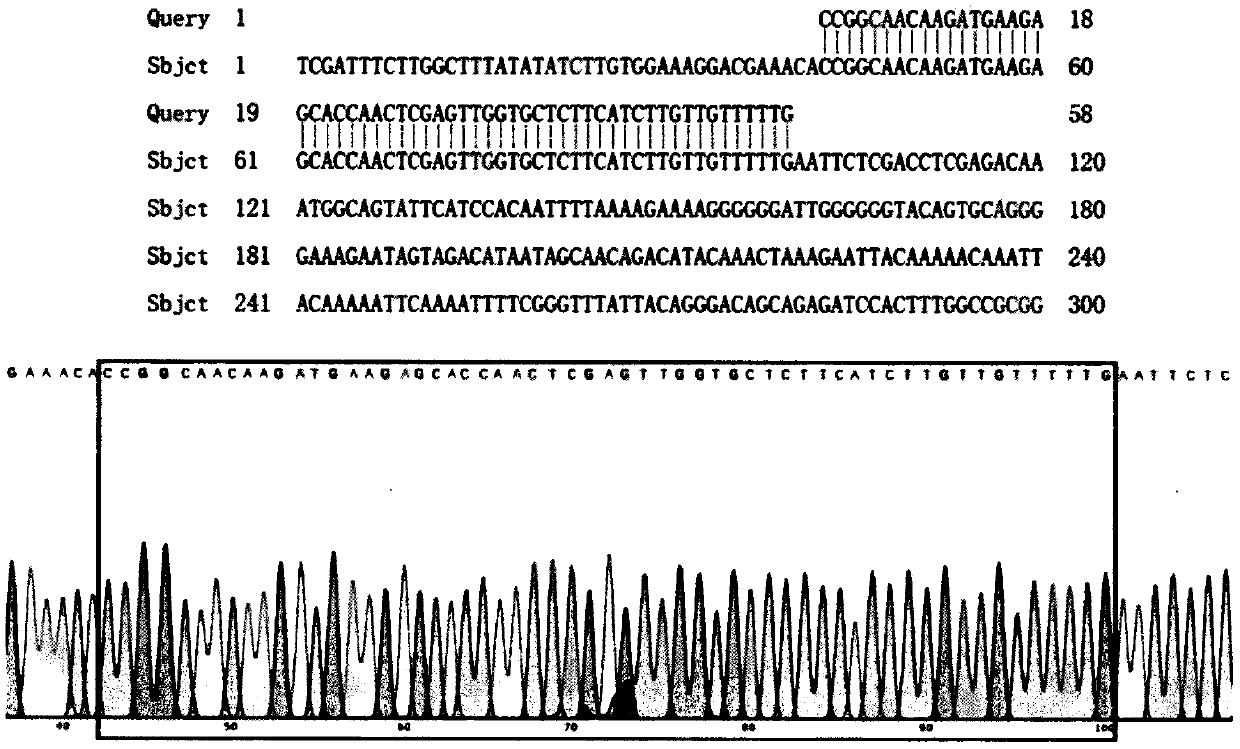Application of ARHGEF19 antisense nucleotide sequence in preparation of drug for inhibiting tumor cell growth and expression vector of ARHGEF19 antisense nucleotide sequence
An antisense nucleotide, tumor cell technology, applied in the field of inhibiting tumor cell growth, can solve problems such as reducing ARHGEF19 expression
- Summary
- Abstract
- Description
- Claims
- Application Information
AI Technical Summary
Problems solved by technology
Method used
Image
Examples
Embodiment 1
[0031] Example 1. Construction of pLKO.1-ARHGEF19-shRNA lentiviral vector
[0032] (1) Synthesize the following positive and negative oligonucleotide sequences (oligos, 5'→3') containing the antisense nucleotide sequence of ARHGEF19:
[0033] ARHGEF19-shRNA-1-Forward:
[0034] CCGGGCCCAGTGTGTCTGGACCTTTCTCGAGAAAGGTCCAGACACACTGGGCTTTTTG (as shown in SEQ ID NO.3);
[0035] ARHGEF19-shRNA-1-Reverse:
[0036] AATTCAAAAAGCCCAGTGTGTCTGGACCTTTCTCGAGAAAGGTCCAGACACACTGGGC (as shown in SEQ ID NO.4);
[0037] ARHGEF19-shRNA-2-Forward:
[0038] CCGGCCAGTCTCGATTCCTCCTTAACTCGAGTTAAGGAGGAATCGAGACTGGTTTTTG (as shown in SEQ ID NO.5);
[0039] ARHGEF19-shRNA-2-Reverse:
[0040] AATTCAAAAAACCAGTCTCGATTCCTCCTTAACTCGAGTTAAGGAGGAATCGAGACTGG (as shown in SEQ ID NO.6);
[0041] At the same time, the following two oligonucleotide sequences (5' → 3') of the pros and cons of the disordered sequence without any corresponding sequence on the genome were synthesized as a control:
[0042] Scramble-sh...
Embodiment 2
[0062] Example 2. Construction of small cell lung cancer cells that stably knock down ARHGEF19
[0063] (1) Packaging of lentivirus
[0064] First, HEK293T cells were divided into 5 × 10 per well 5 Cells were plated in a six-well plate and cultured overnight; the next day, when the cell density was 60-70%, transfection was performed, and the ratio of transfection plasmid was pLKO.1 vector: psPAX.2: pMD2.G=4:3: 1. The transfection process follows Lipofectin TM 2000 Transfection Reagent Manual; 8 hours after transfection, fresh medium was replaced, and the supernatant was collected 48 hours after the medium change, which was the lentivirus solution.
[0065] (2) Screening of lentivirus-infected small cell lung cancer cells and stable cell lines
[0066] Infect the small cell lung cancer cell lines NCI-H69 and NCI-H526 cells with the packaged lentivirus solution, add puromycin (Puromycin) for stable selection after 48 hours of infection, and select for about 5 days, so that al...
Embodiment 3
[0075] Example 3. The effect of ARHGEF19 knockdown on the growth of small cell lung cancer cells
[0076] Count the cells verified above, and dilute the cells to 1×10 5 cells / ml, inoculated in a six-well plate, inoculated 1ml per well, that is, 1×10 5 cells / well, each group of cells was inoculated into 7 wells, and placed in the incubator to continue culturing. The next day, the cells in one well of each group were counted for three times each time, and the average value was taken as the number of cells in the group. Continue to count, count the number of cells in each group for 7 days in total. Repeat three times, take time (days) as the horizontal axis, and the number of cells per day as the vertical axis, draw the cell growth curve, and use SPSS software for statistical analysis. Figure 8 and Figure 9 The growth curves of NCI-H69 and NCI-H526 cells after knocking down ARHGEF19, respectively, show that after shRNA inhibits the expression of ARHGEF19, the proliferation ...
PUM
 Login to View More
Login to View More Abstract
Description
Claims
Application Information
 Login to View More
Login to View More - R&D
- Intellectual Property
- Life Sciences
- Materials
- Tech Scout
- Unparalleled Data Quality
- Higher Quality Content
- 60% Fewer Hallucinations
Browse by: Latest US Patents, China's latest patents, Technical Efficacy Thesaurus, Application Domain, Technology Topic, Popular Technical Reports.
© 2025 PatSnap. All rights reserved.Legal|Privacy policy|Modern Slavery Act Transparency Statement|Sitemap|About US| Contact US: help@patsnap.com



